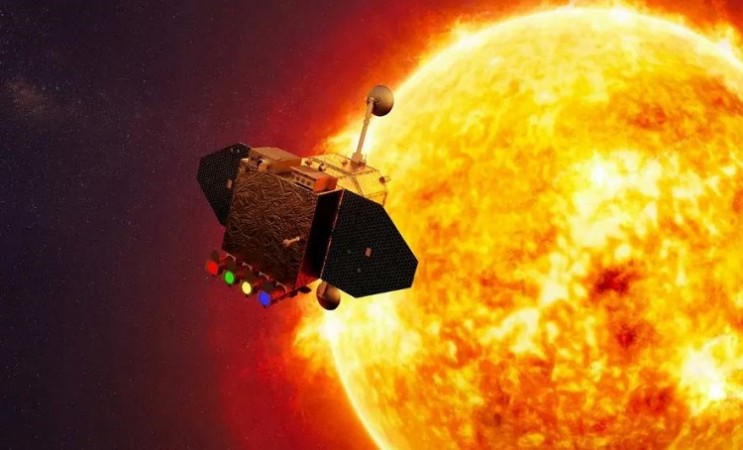
India's innovative Aditya L1 mission, which aims to study the Sun, is swiftly heading towards a crucial moment as it prepares to settle into its assigned orbit by January 6. Launched on September 2, the spacecraft is on the verge of reaching a 'halo orbit' around the Lagrange Point 1 (L1), a special position within the dynamic Sun-Earth system.
L1 is unique among five points in this system where the gravitational forces between Earth and the Sun find equilibrium, making it a stable location ideal for the spacecraft's observations. Positioned approximately 1.5 million kilometers away from Earth, this spot offers a strategic advantage for studying the Sun, accounting for only 1% of the total distance between Earth and the Sun.
An ISRO official confirmed, "Aditya L1 has reached the L1 point, and the upcoming maneuver on January 6 will precisely position it into the desired orbit. Without this orbit, the spacecraft would continue its path towards the Sun."
However, achieving a 'halo orbit' around L1 presents significant challenges. Annapurni Subramaniam, director of the Indian Institute of Astrophysics, explained, "Aditya L1 will transition into a halo orbit around the L1 point, synchronizing its movements with Earth's orbit around the Sun."
This intricate maneuver involves firing thrusters to change the spacecraft's speed and path. Dibyendu Nandi, Chair of the Aditya L1 mission's Space Weather and Monitoring Committee, stressed its importance, saying, "Missing the intended orbit initially would require multiple subsequent corrections and thruster firings."
During its 124-day journey, Aditya began collecting scientific data just 16 days into its mission, providing insights into high-energy X-rays from solar flares and comprehensive solar disc imaging.
Aditya carries seven scientific instruments, including the Visible Emission Line Coronograph (VELC) and Solar Ultraviolet Imaging Telescope (SUIT), aimed at directly observing the Sun. Additional tools like the Aditya Solar Wind Particle Experiment (ASPEX) and Plasma Analyser Package for Aditya (PAPA) will aid in on-site measurements.
Crucially, Aditya's entry into a halo orbit around L1 will allow it to study solar storms and emissions from the Sun before they impact Earth or enter Earth's magnetic field.
The mission's extensive study of solar phenomena across various wavelengths and measurement of radiation, particles, and magnetic fields have gained global attention. Prof R Ramesh of the Indian Institute of Astrophysics highlighted, "Aditya L1 aims to closely examine the solar corona, enabling observations with smaller occulting disks for greater precision."
The final maneuver to position Aditya-L1 into its halo orbit, scheduled for Saturday, marks a significant milestone in India's space exploration. With its diverse payload, this mission promises groundbreaking insights into the Sun's behavior and phenomena, complementing data from existing satellites like SOHO.
Ensuring Aditya stays in its designated orbit presents ongoing challenges, requiring precise orbit determination and periodic adjustments, as emphasized by ISRO chairman S Somnath. The spacecraft's proximity to the Sun at L1 offers exceptional observational opportunities but also demands meticulous maintenance to navigate the complexities of this unique solar observation point.
As Aditya L1 approaches its pivotal orbital positioning, India's venture into solar exploration signifies a new era in space research, poised to uncover unparalleled insights into our closest celestial neighbor, the Sun.